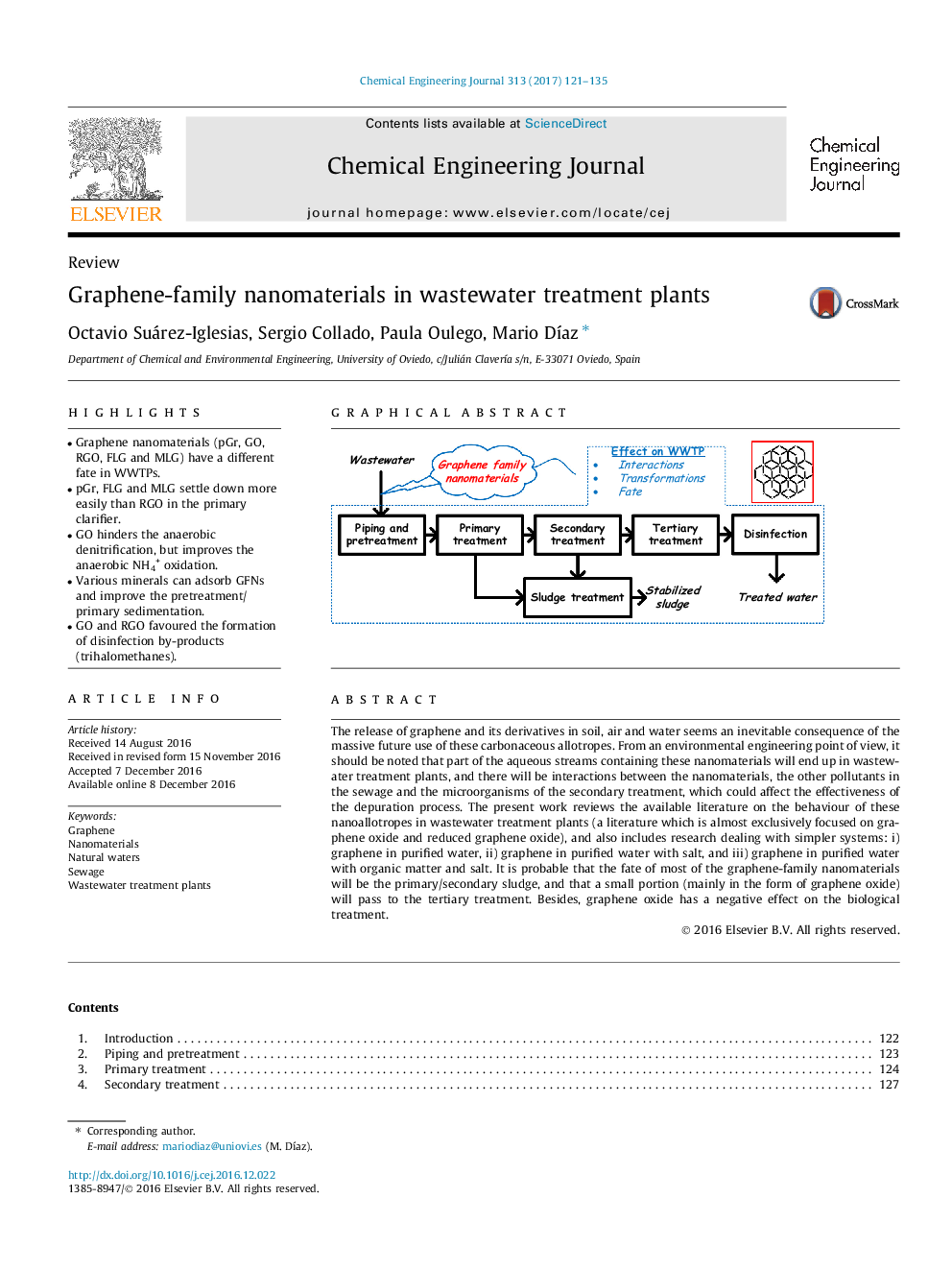| کد مقاله | کد نشریه | سال انتشار | مقاله انگلیسی | نسخه تمام متن |
|---|---|---|---|---|
| 6466521 | 1422965 | 2017 | 15 صفحه PDF | دانلود رایگان |
- Graphene nanomaterials (pGr, GO, RGO, FLG and MLG) have a different fate in WWTPs.
- pGr, FLG and MLG settle down more easily than RGO in the primary clarifier.
- GO hinders the anaerobic denitrification, but improves the anaerobic NH4+ oxidation.
- Various minerals can adsorb GFNs and improve the pretreatment/primary sedimentation.
- GO and RGO favoured the formation of disinfection by-products (trihalomethanes).
The release of graphene and its derivatives in soil, air and water seems an inevitable consequence of the massive future use of these carbonaceous allotropes. From an environmental engineering point of view, it should be noted that part of the aqueous streams containing these nanomaterials will end up in wastewater treatment plants, and there will be interactions between the nanomaterials, the other pollutants in the sewage and the microorganisms of the secondary treatment, which could affect the effectiveness of the depuration process. The present work reviews the available literature on the behaviour of these nanoallotropes in wastewater treatment plants (a literature which is almost exclusively focused on graphene oxide and reduced graphene oxide), and also includes research dealing with simpler systems: i) graphene in purified water, ii) graphene in purified water with salt, and iii) graphene in purified water with organic matter and salt. It is probable that the fate of most of the graphene-family nanomaterials will be the primary/secondary sludge, and that a small portion (mainly in the form of graphene oxide) will pass to the tertiary treatment. Besides, graphene oxide has a negative effect on the biological treatment.
263
Journal: Chemical Engineering Journal - Volume 313, 1 April 2017, Pages 121-135
